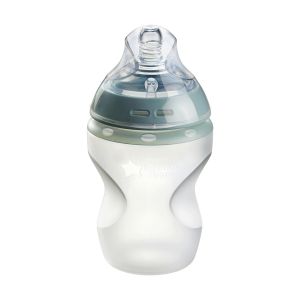
This is a demo store. No orders will be fulfilled.
Subscription orders can be cancelled at anytime. Standard delivery will be charged on each subscription order. Find out more about subscriptions.
They’re easy and fuss free
Your products are automatically sent to you
You save when you sign up for a subscription
You can cancel at any time
Making sure that your baby's sleep space is at just the right temperature and not too hot or cold is very important.
This is not only for their comfort, but also to keep them safe. After all, they can't speak yet, and so are unable to let you know if they're uncomfortable.
If you're wondering what the perfect room temperature for a baby is, and how you can help to keep them comfy, we've got all the answers you need in this handy guide.
Put simply, the ideal temperature for a baby's room is between 16-22��C or 50-71��F. You can use a room thermometer to monitor the temperature and reassure you that your baby's room is at the perfect temperature.
If the room feels too hot or a little chilly to you, then the chances are your baby will feel the same!
At first, newborn babies are extra sensitive to room temperatures that are too cool or warm because they're still developing. By around 11 weeks, they begin to be able to regulate their body temperature on a night-time.
Even as they grow and develop, it's still really important to ensure that their room is at a safe, comfortable temperature. You should also make sure that they're wearing appropriate sleepwear for the temperature of the room.
In general, babies don't need to sleep in a hot room to be comfortable. When little one's are at the perfect temperature as they sleep, they're able to conserve their energy for growth.
The NHS also advises that the risk of Sudden Infant Death Syndrome (SIDS) can increase with overheating. If your baby's room is too hot or there is too much clothing or bedding, your baby can overheat. For this reason, it's important that you don't overdress babies for sleep or heat their room too much, even during the colder months of the year or when they're unwell.
The temperature of our homes fluctuates throughout the year, and it can be a little tricky to keep the temperature consistent. These tips might help you to monitor and maintain your baby's room temperature...
Babies usually have higher body temperatures than older children. A normal body temperature for babies is 36.4��C or 97.5��F - although this can vary slightly.
To check the temperature of your baby accurately, you can feel the nape of their neck, their back, or their tummy. If they feel hot to the touch, breathe rapidly, have flushed cheeks or are sweaty, you can remove a layer to make them more comfortable.
Don't worry if your little one's hands or feet are cooler. This is normal, and it's common for newborn babies to have cold fingers and toes because these extremities are the parts that their blood reaches last.
If your little one is too cold, they may become less active, cry or become fussy for no apparent reason, and their skin will feel notably cooler than usual.
If you're worried that your little one is cold, adding an extra layer of well-fitting bedclothes will usually help. You can also cuddle them close and use skin-to-skin contact to warm them up.
Remember that everyone is affected by cold differently. So, remember to use your parental instinct when deciding how many layers are best when you're putting your baby to sleep.
When your little one is feeling unwell, it can be tempting to wrap them up in extra layers. But the truth is, even if they're poorly, babies don't need extra layers at bedtime. If they're feverish, they actually need to be cooler so that they can lower their own body temperature.
If you're worried that your baby may be unwell, you can use a thermometer to monitor their body temperature. Don't hesitate to seek medical advice for reassurance if you're concerned.